
[TF feature article with photos] 일본 경제보복 속 광복 74주년, 친일 잔재는 '여전' The 74th anniversary of the independence in the economy retaliation by Japan. The dregs of pro-Japanese are “the same as before”.
Post: 2019.08.15 05:00
translated by Ianow Eastas
Impression of the translator
The Korean reporters propose to get rid of the systems and the words brought to Korea in the period of Japanese rule.
For example, they propose to change the word “유치원” to “유아원”, or to stop using “〜Dan” that is generally used in the name of the shop.
(Both “유치원” and “유아원” mean “kindergarten”.)
However, in this article itself, they use considerable words that came from Japanese,
and in the first place the word “대통령 (President)” is a Japanese word, too.
If you change “유치원”, you come to have to change “대통령”.
It is said about 70% of the Korean words are derived from Japanese. Because it is Korean people, they will probably change the words by halves without changing them all.
(cf. Original Korean text. The most words that have the Chinese characters alongside are derived from Japanese.
In the first place most of words of the title itself are Japanese.)
They say, “As the buildings such as the old Seoul station buildings have a big value in the architectural history, they are good. But you should remove the cornerstones, as the calligraphies of the governor-general are carved on them.”
If a building has a big value in the architectural history, "the calligraphy of the governor-general" should have the historic value too. The Korean thinking is illogical.
The portraits of the Korean paper money will change on the ground that the painters of the portraits of the paper money are pro-Japanese.
The painters learned the Japanese painting, and contributed to development of the Korean art.
Kim Hwal-lan learned the Japanese school system and founded Ewha Womans University, and devoted herself to development of the Korean study and culture. She is also criticized now saying that she was a pro-Japanese. The Korean thought is illogical.
In those days, it should have been essential for the underdeveloped country to learn the advanced Japanese system and culture.
And yet Koreans criticize them after all this time now, saying they were pro-Japanese.
Jo Jung-rae, the Korean famous novelist says, “If you go study abroad in Japan, you are unconditionally a pro-Japanese and a traitor”.
(Korean news)
I can understand the feeling that Koreans want to delete the history of the humiliation,
but I have questions about Koreans who are going to erase anything related to Japan.
“Feelings are given priority than the logic”. This is one of the Korean traits, but they should think calmly.
The current Korean adults had read the Japanese picture books translated in Korean language and the European and American literary works that Japanese translated and the Korean retranslated. And they learned with the textbooks that arranged the Japanese textbooks and were brought up. Korea has copied or stolen the Japanese technology, and built up current developed Korea.
(Korean Fakes & Plagiarisms)
If they really remove the Japanese-style things thoroughly, nothing will remain behind in Korea.
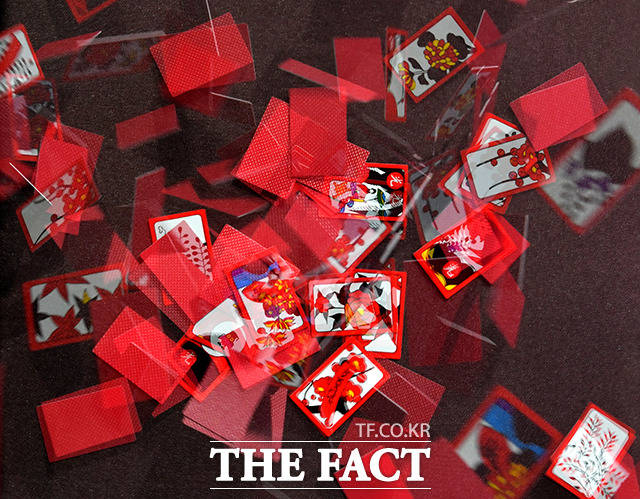
|
| We enjoy Hwatu at every national holiday, but it is not our traditional play. It derives from Hanafuda, Japanese playing cards and it entered our country in the period of Japan’s rule. Hanafuda has 48 cards in total, and every month has 4 cards. A painting symbolizing Japan is drawn in each. The back of the Japanese card is black, and it turned into red after it came to Korea. The photograph is taken by collecting our basic Hwatu cards and using multiple exposure. / reporter: Ee Seon-hwa, Ee Deok-in |
“ChanjiGaemyeong” (enforced change of name from a Korean to a Japanese one), Hanafuda, funeral culture, the Japanese style words, etc. We can find the traces of the Empire of Japan in many places. We must rebuild our racial legitimacy unquestionably.
[The details fact|reporter: Ee Seon-hwa, Ee Deok-in]
“Kwang-bag-e Three go, Gotcha Kodori~”
I sometimes felt very nostalgic for this voice that resounded for each house on a holiday. We spread a blanket and sit in circle on it happily, father put cards together and a son gathered coins. This was the familiar scenery. This is the Japanese playing cards play that we enjoyed at the time when there was no special game culture.
Hwatu has 4 cards per one month and so it has 48 cards. You can get points by making pairs. Hwatu was so popular that speaking of Korean plays people imagined it, and it was played amongst many people regardless of age or gender. Hwatu occupied the seat deeply in our lives as it was considered as our folk play. What is the origin on earth?
The original name of Hwatu is Hanafuda and it is a traditional play of Japan. It was made act in Japan for a gamble, and entered our country in the period of Japan’s rule. A painting symbolizing Japan is drawn in each card. For example, the cherry blossoms are on March cards and the national flowers (chrysanthemum) symbolizing the Imperial family are on September cards.
There are unexpectedly many dregs of the Empire of Japan like Twatu. They entered Korea in the period of Japan’s rule and stay deep into our lives. “ChanjiGaemyeong” (enforced change of name from a Korean to a Japanese one) was performed for crossing out our race. So-called “Chanji Kaemyeong” that means changing the name of our land without permission. “Cheoksan Gaok” that means the houses that Japanese left after the liberation. Funeral service culture, the Japanese style words, etc.. The traces of the Empire of Japan remain in our everyday many places.
We have more important “the 74th anniversary of the independence” in the economy retaliation by Japan. I want to chase the dregs of the Empire of Japan that remain in our everyday many places and I want to liquidate Pro-Japanese and create opportunities to straighten our racial legitimacy.
◆ Songdo, Myeon-dong, WonnamDon ... “Japanese style place names that are left in many places”
Songdo is called Konan of Inchon. The meaning is “the pine island ”. However, when you see Sondo in the photograph, the name and the figure do not match at all. There is no pine forest along the billowing shore of Inchon too. Why did this place become the pine island? It goes back to the time of the Empire of Japan.
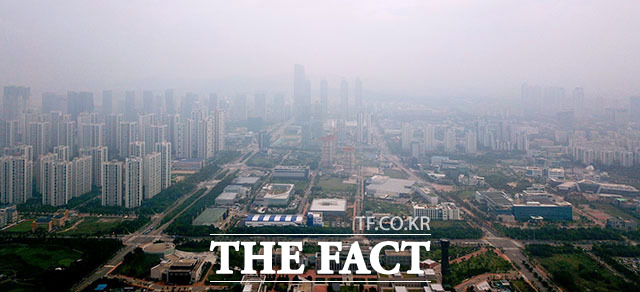
|
| October the 13th, Songdo international city. Songdo changed the name into Okryeon-dong after the liberation. Songdo in the photograph is the polder. It was reclaimed land from the Incheon offing. Incheon City named it as Songdo again. 松島 is the name of the Japanese warship. |
Songdo was admitted into the Incheon department in 1936 and became Songdo that was the Japanese place name. Songdo just took the name of the Japanese warship Matsushima. It was a tool of the aggression of the Empire of Japan. Songdo changed the name into Okryeon-dong after the liberation. But, in the 2000s we filled up the shore near Incheon and made the land, and named the side of Okryeon-dong as Songdo. The Japanese warship international city. It is the present Songdo international city.
There are unexpectedly much Japanese style place names left other than Songdo. Myeon-dong is a place a lot of foreigners visit. It was made by attaching “dong” to “Myeon” of the Japanese Emperor “明治”.
The Empire of Japan changed the domestic inherent place names through “Chanji Kaemyeong” forcibly in 1914. In spite of movement to look for the inherent place names, the Japanese style place names that are still left exceed 30% only in Seoul.
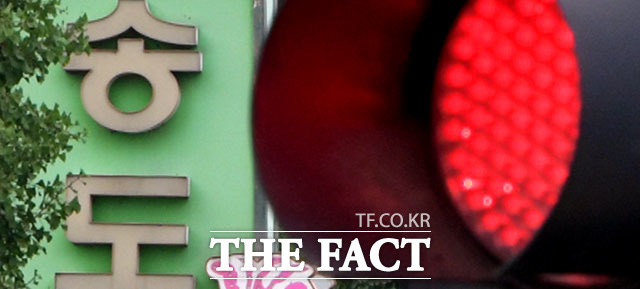
|
| The name Songdo was made by gluing Song (pine) and Do (island). Unlike the name, real Songdo does not have the forest of the pine and it is not an island, either. |
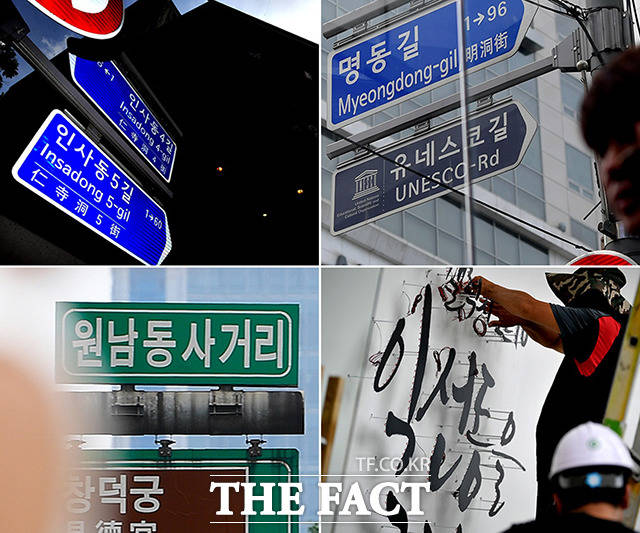
|
| After “Chanji Kaemyeong” in 1914, the Korean place names lost the inherent names. In spite of movement to look for the inherent place names, the Japanese style place names that are still left exceed 30% only in Seoul. The signs and the signboards of the photographs point at 인사동, 명동, 익선동 and 원남동. (clockwise rotation from the upper left) |
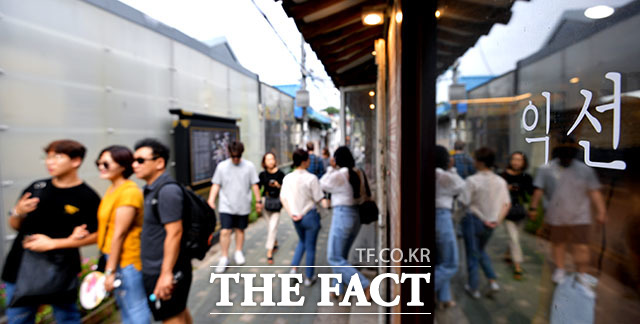
|
| On the afternoon of 12th, citizens visit Ikseon-dong at the Seoul Jongno ward and walk the town. |
◆ “ㅇㅇ동 (Dong) ㅇㅇ번지 (Byeonji)” 지번 주소 (Chibyeon Chuso, The lot number address)
The lot number address is called the old address now. It was also made through the land investigation by the Empire of Japan in the 1910s. The Government General of Korea plundered 40% of all countries forcibly, after it gave a number to the land of the whole country and investigated the owners. It is the lot number address that was made then.
Only our country and Japan use the lot number address throughout the world. Besides, Japan is reorganizing the address system earlier than us. Our country enforces the road name address system since 2014, but two systems are still used together because of its inconvenience.
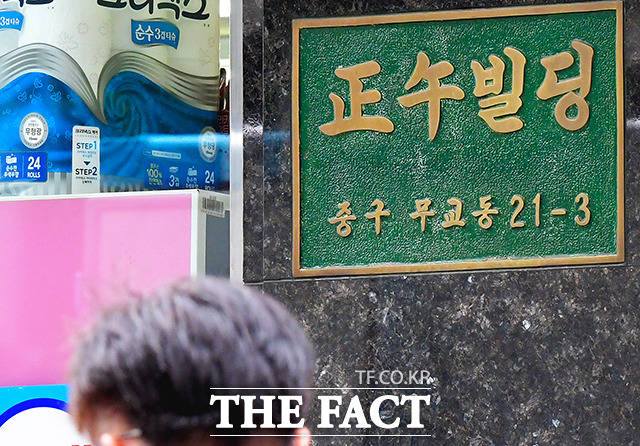
|
| “ㅇㅇ동 ㅇㅇ번지”, The road name address system is enforced, but the signs of the lot number address remain in many places in Seoul. |
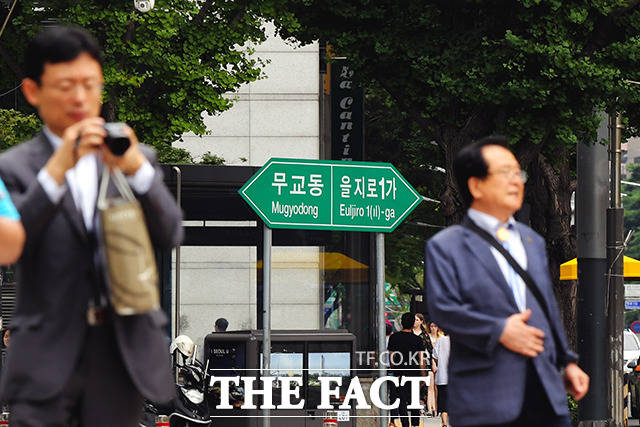
|
| The lot number address system was made through the land investigation by the Empire of Japan. Japan plundered 40% of all countries forcibly through this business. In the afternoon of 7th, citizens visit Central Seoul and walk the Mugyo-dong town where the old address mark is left. |
◆ “유치원 (Yuchiwon)” or “유아원 (Yuawon)”
There are many dregs of the Empire of Japan left in the educational front than we think. The custom to display our national flag in a frame, the morning gathering, the school uniform, the hair regulation and the school excursion put the roots in the Japanese style culture in the period of Japanese rule.
“유치원 (Yuchiwon)” you can usually see is also one of the dregs of the Empire of Japan. It started as a facility to educate the Japanese infant children who stayed in Pusan. It is the word that Japanese translated the German word, “Kindergarten” in the Japanese style. In addition, “유치원 (Yuchiwon)” has a meaning that the level is low or it’s unripe. China changed the name into “유아원 (Yuawon)” just after liberation, but it is still used in Korea.

|
| The word “유치원 (Yuchiwon)” we often use has a meaning that the level is low or it’s unripe. It’s a dreg of the Empire of Japan. |
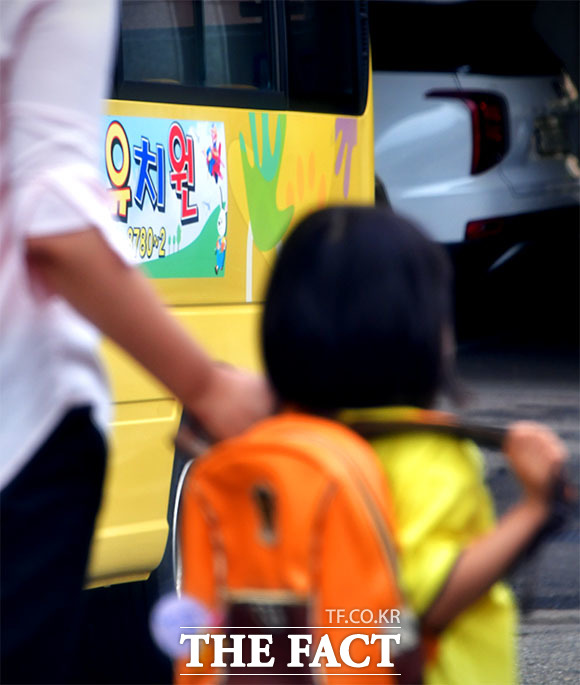
|
| China changed the name into “유아원 (Yuawon)” just after liberation, but Korea still uses “유치원 (Yuchiwon)”. Isn’t it necessary to use “유아원 (Yuawon)” or “유아 (Yua)” school in substitution for “유치원 (Yuchiwon)” now? |
◆ “Cheoksan Gaok (the house that Japanese left) and cornerstone”
“Cheoksan Gaok” is also indispensable to the Empire of Japan’s dreg that you can easily see. They are “Old Seoul Station”, “Seoul Library”, “Bank of Korea”, “Japanese military officers building restored to the original state in Sangam-dong neighborhood park”, “Incheon branch of the Bank of Japan in the Incheon treaty port street”, “The Japanese houses all over Huam-dong where Japanese lived”, “The corporation houses for the workers called out by forced labor”, etc.. They are various. These buildings are evaluated to have high value, because they show our painful history in the times of the compulsion occupation period by the Empire of Japan.
However, the cornerstone is different. A part of the buildings mentioned above has the cornerstone where calligraphy of the Governor-General of Korea was engraved. The cornerstone of the Bank of Korea in front of the railroad crossing has calligraphy of the first Resident-General of Korea, Ito Hirobumi whom An Jung-geun assassinated. The letters by the Governor-General Saito are engraved in the right side cornerstone at the entrance of the Seoul City art museum. In the edge of the apartment approach in Mapo, letters by Ugaki Kazunari who acted as Governor-General Korea is reproduced.
In the old Seoul station building, the cornerstone where letters by the Governor-General Saitō Makoto were engraved into occupies the big seat, but it is not 100 meters far from the statue of doctor Kang Woo-kyu who tried to assassinate Saitō Makoto. The calligraphy of the governor-general is engraved on the cornerstone. What must we reconfirm looking at it? It is a trace of the painful history behind here and there in the area with much flow population.
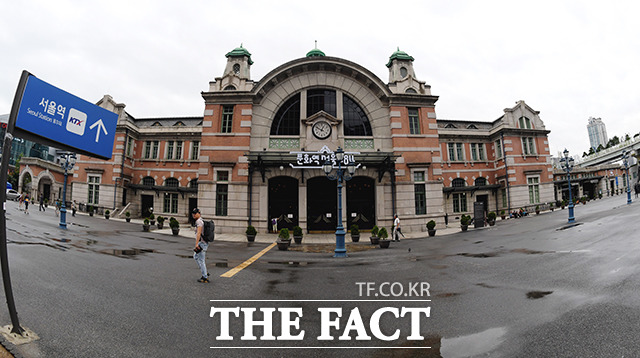
|
| The old Seoul station building is the building that Japan made as the basic transportation means for war supplies such as the supplies or the human resources at the time of the compulsion occupation period by the Empire of Japan. It is a Japanese dreg that Japanese designed, but it is the oldest irailroad building in Korea and it has a big historic value such as the use of the palace architecture technique in the Renaissance. |

|
| The photographs are the old Seoul Special City Government building, Main Building of Seoul Bank of Korea and the old Incheon Branch of Japanese first bank. All of three buildings have the renaissance style and are the important historical sources you can catch a glimpse of construction technique of those days. And they are the symbols of our painful history. |
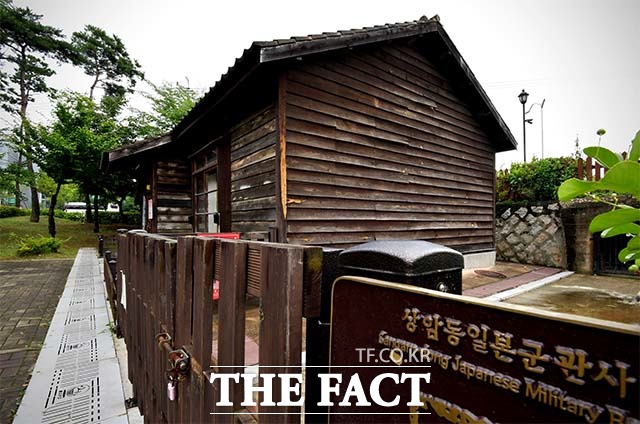
|
| Japanese military officers building removed and restored to the original state in Sangam-dong owl neighborhood park. This building was built as a Japanese official residence for garrison in around 1937, used for about eight years and became “Cheoksan Gaok (the house that Japanese left)”. It was estimated that it was used from 1945 through 1956 as an official dwelling of the national military for about 11 years. It was sold to an individual afterward. |

|
| The only one Japanese military officer building in our country. It is saved as a subject of study about houses and the official dwelling for the officers in the modern times period until now. |
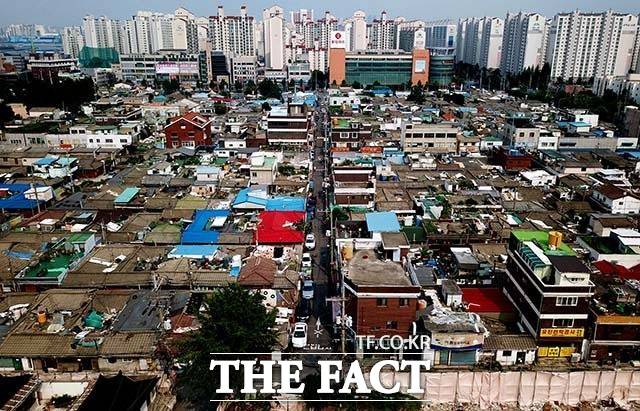
|
| The look of the Incheon Sangok-dong corporation houses. The corporation houses were supplied to solve the problem of the lack of houses of the workers working in the war industry that the Empire of Japan built to make Korea the supply division base under the war regime. It was built in Seoul Mullae-dong, Daebang-dong, Sangdo-dong and Incheon Sungui-dong besides Sangok-dong. |
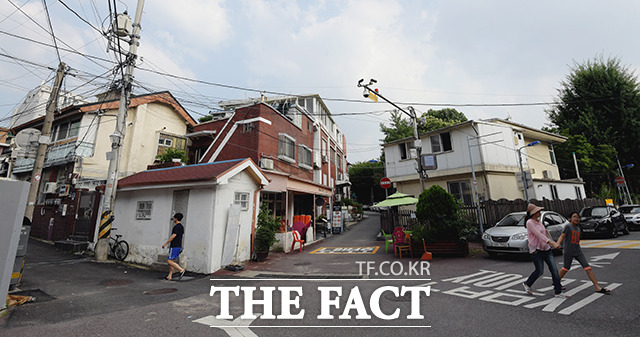
|
| There are a lot of “Cheoksan Gaok” left in Seoul Huam-dong. The structure of the pointed roof and the two‐story house is the characteristic of the Japanese style house during the compulsion occupation period by the Empire of Japan. |
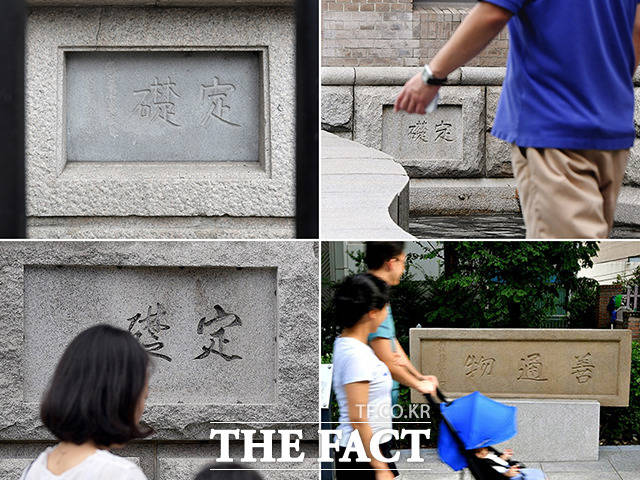
|
| The cornerstone is different from “Cheoksan Gaok” that has historic value. It has the governor-general's calligraphy and is a dreg of the Empire of Japan. Most people go past without knowing the meaning, even if they see the cornerstone left in many places in Seoul. The photographs indicate the cornerstone of the old Seoul station building, the cornerstone of the Seoul City art museum, the indication stone of Mapo Seontongmul and the cornerstone of the Main Building of Bank of Korea (clockwise rotation from the upper left). |
◆“Chundangji Pond in Changgyeonggung” The Empire of Japan named it.
Changgyeonggung is the Korean third palace. It is the trace of the history that experienced the suffering with the whole body during the compulsion occupation period by the Empire of Japan. Japan made many kinds of play facilities such as zoo or botanical garden that were attached the name “Changgyeongwon”. It was because Japan wanted to lower the status of Korean old palace. In addition, Japan planted several thousand cherry trees and installed the cable car. And more than 60 stippling, walls and the palace gates were removed or were transformed. The reconstruction business of Imperial Court has been carried out since 1984, but it is very difficult to completely recover. It is “Chundangji Pond” most difficult in them.
Present “Chundangji Pond” is divided into two parts, but a small pond is original “Chundangji Pond” (Baekyeondam). The big pond (Naenongpo) was originally a field not a pond, where the king performed the ceremony that he cultivated in the royal palace. The name “Chundangji” means the pond which is adjacent to “Chundangdae”. This is one of the Japanese dregs and is left without being restored.

|
| Across the bridge, Baekyeondam, the original “Chundangji Pond” (the left) and Naenongpo, originally a rice field (the right). |
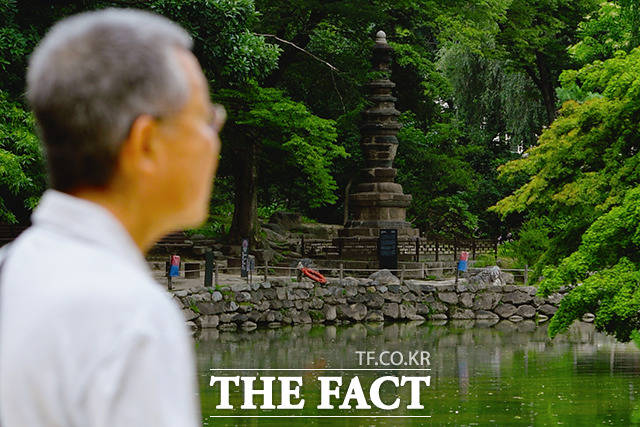
|
| The octagonal Seven-storey stone pagoda between “Chundangji Pond” and small “Chundangji Pond (Baekyeondam)”. It's a Chinese style stone pagoda, but it is different from the conventional one in the form. When, where and why did they move it here? Nobody can understand correct contents. |
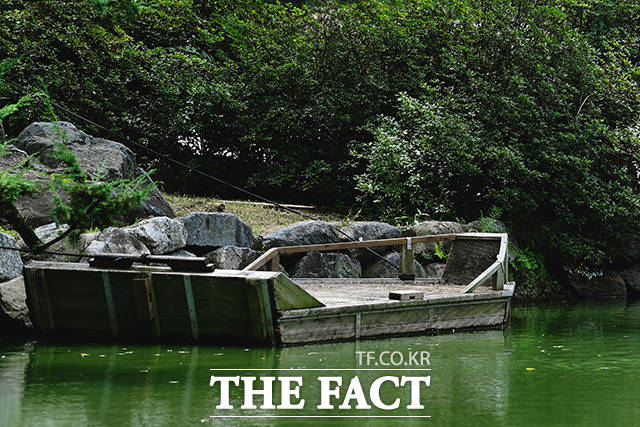
|
| The ferry boat in “Chundangji Pond”. Japan lowered the status of “Changgyeonggung ” to “Changgyeongwon” and made many kinds of play facilities. The cable car and the boat are a part of play facilities in those days. |
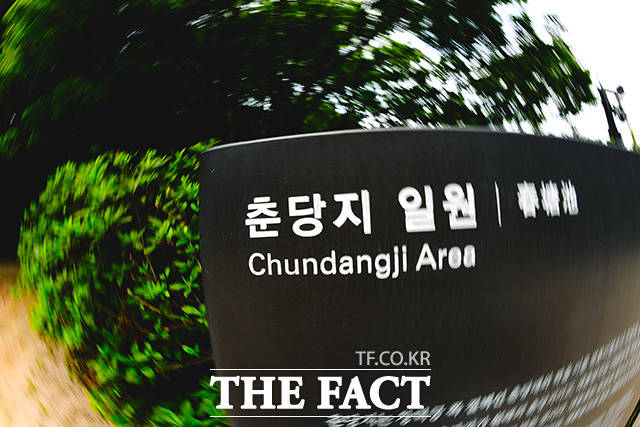
|
| The name “Chundangji” means the pond which is adjacent to “Chundangdae”. It is the name that Japan named. |
◆ “The melted traces of the Empire of Japan in daily life”
Korean typical food in the winter season, “Pungeopang” is also originated in “Taiyaki ” that is a Japanese baked confectionery. “Tai” means the sea bream. The method to put dough and the bean jam in the frame of the sea bream form and bake it just came to Korea, and it became the food called “Pungeopang”. We use the cream puff or the sweet potato sediment other than the bean jam and they have diversity, but the manufacturing process continues now without a big difference.
In addition, there are a lot of melted dregs of the Empire of Japan in daily life. “Nogada” means “suffering”. It comes from Japanese word “Dokata”. “Tenten” is a Japanese word that means the shape of the droplet and “Taengtaeng” is a Korean word that pronounces the Japanese word in Korean style. “Kosan” is a Japanese word that means “veteran” and “Kocham” is a Korean word that pronounces the Japanese word in Korean style. The word “Chaneop” (overtime work) used since the 1930s in the times of the compulsion occupation period by the Empire of Japan (Zangyo in Japanese). Names such as “Cheil” (the first), “Chugang” (center) are the words that the empire of Japan made in order to promote the hierarchy and for its convenience. Ijakaya is a Japanese style bar (Izakaya in Japanese). “Seukidashi” means basic snacks (Tsukidashi in Japanese). “Kurakbu” means “club” pronunciated in Japanese style. “Aemae” means “vagueness” (Aimai in Japanese). “〜Dan” is used in the name of the bakery generally (“Do” in Japanese). All are the traces of Japan.
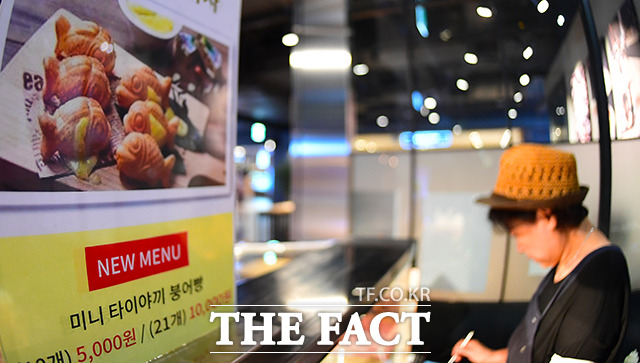
|
| “Pungeopang” is originated in “Taiyaki ” that is a Japanese baked confectionery. “Taiyaki ” is made to put dough and the bean jam in the frame of the sea bream form and bake it. We use the shape of the crucian carp not the sea bream. |
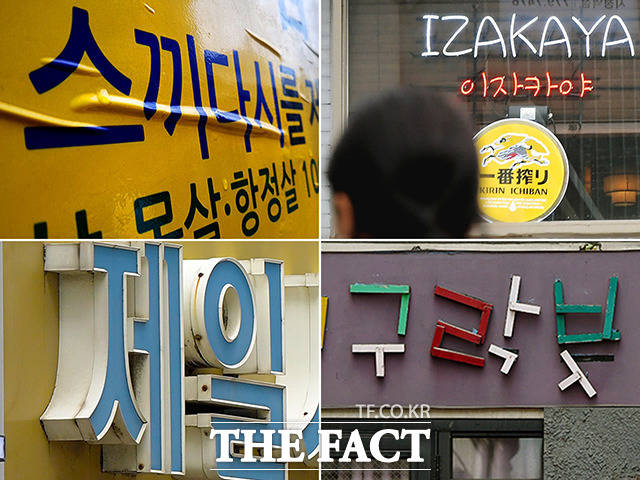
|
| The Japanese style words deeply penetrates into our daily lives. The photographs indicate 스끼다시 (突き出し), 이자카야 (居酒屋), 구락부 (クラブ), 제일 (第一), 노가다 (土方), 땡땡이 (点々と), 고참 (古参), 잔업 (残業), 시말서 (始末書), 다대기 (タタキ), 파이팅 (ファイト), 간지 (干支) and 애매 (曖昧) | .

|
| “〜Dan” is often used in the name of the bakery. This begins in the times of the compulsion occupation period by the Empire of Japan. |
◆ “The simplified funeral service culture”
In 1934, Government General of Korea made “The rule of courtesy”. This includes the simplified funeral service culture that ignores our traditional funeral service culture such as the chief mourner, the mourning dress, the mourning period. Hemp cloths and the armband are the examples.
At the funeral in our country, the dead person wore the best clothes that he/she wore during the lifetime. Silk or pongee were originally used. However, the Empire of Japan made it hemp cloths. It said silk was too luxurious. It decided to wear Korean overcoat and Korean hood as the mourning dress. It decided to wear the mourning badge and if you wore a suit, you had to wear an armband.
In addition, the decoration of the chrysanthemum symbolizing the Japanese Royal Family in substitution for the screen, and the public cemetery are all dregs of the Empire of Japan.

|
| According to “the rule of courtesy” Government General of Korea made, the mourning dress was not the original cloths, but Korean overcoat or Korean hood. It decided to wear the mourning badge and if you wore a suit, you had to wear an armband. Our traditional funeral service culture does not have the armband. |
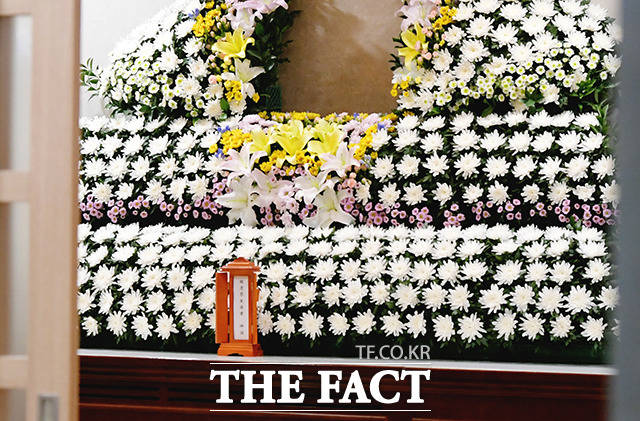
|
| The decoration of the chrysanthemum symbolizing the Japanese Royal Family in substitution for the screen is also dreg of the Empire of Japan. |
◆ Trace of pro-Japanese in “wallets”
The dregs of the Empire of Japan can be seen even in the trace of the pro-Japanese. Kim Hwal-lan, the founder of Ewha Womans University is a very important typical pro-Japanese. She had performed a pro-Japanese and anti-racial acts daily since the 1930s. She participated in various pro-Japanese groups that Government General of Korea superintended, and she did various pro-Japanese activities. She left the articles to the newspapers and the magazines. The bronze statue of Kim Hwal-lan is in the middle of the campus of Ewha Womans University and still looks so majestic.
The trace of pro-Japanese remains to our paper money entirely. It is the painter Kim Ki-chang who is known as a genius painter and drew the portrait of the King Sejong in 10,000 won bill. The portrait of Sin Saimdang in 50000 won bill is the work by the great painter Kim Eun-ho. Two painters were treated well as the elder statesmen of the Republic of Korea world of art, because they released a lot of works that the pro-Japanese suspicion was strong.
Our paper money we always have in our wallets are the symbol to express the pro-Japanese evil that we cannot liquidate entirely.

|
| The bronze statue of Kim Hwal-lan known as pro-Japanese is in the middle of the campus of Ewha Womans University. In the 1930's Kim Hwal-lan, the founder of Ewha Womans University participated in various pro-Japanese groups, and she did various pro-Japanese activities. She left the articles to the newspapers and the magazines. The students of the university demanded to remove the statue and they put up a notice board that indicated her pro-Japanese behaviors before the statue. This board is removed by the school now. |

|
| The portraits of our paper money are the works by the pro-Japanese painters, Kim Ki-chang and Kim Eun-ho. They are the symbol to express the pro-Japanese evil that we cannot liquidate entirely. |
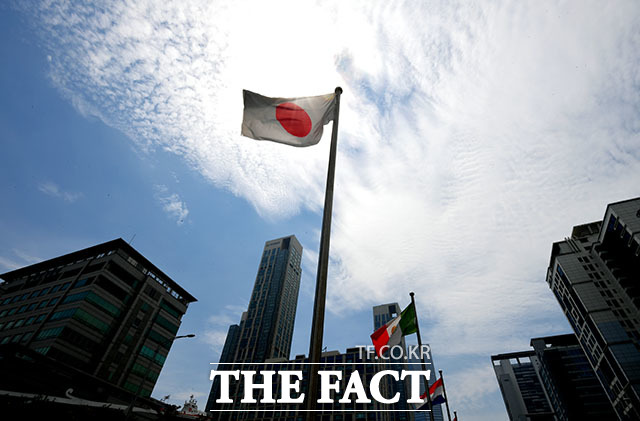
|
| The Japanese national flag that flutters in the sky of Songdo. There are many dregs of the Empire of Japan, but we don't know that and we pass over them. We must liquidate and correct them. |
The liquidation of the dregs of the Empire of Japan is our long cherished dream, but it has not been performed normally even after independence. The dregs of the Empire of Japan occupy in everyday life. Must we still liquidate many things that we don't know are the dregs of the Empire of Japan and we pass over? There is a proverb “Time you think it was late is the fastest time”.
We must correct the dregs of the Empire of Japan and put up dignified history like 74 years ago when “Viva! Republic of Korea!” sounded loudly on this land.
Photograph picture planning department photo@tf.co.kr


